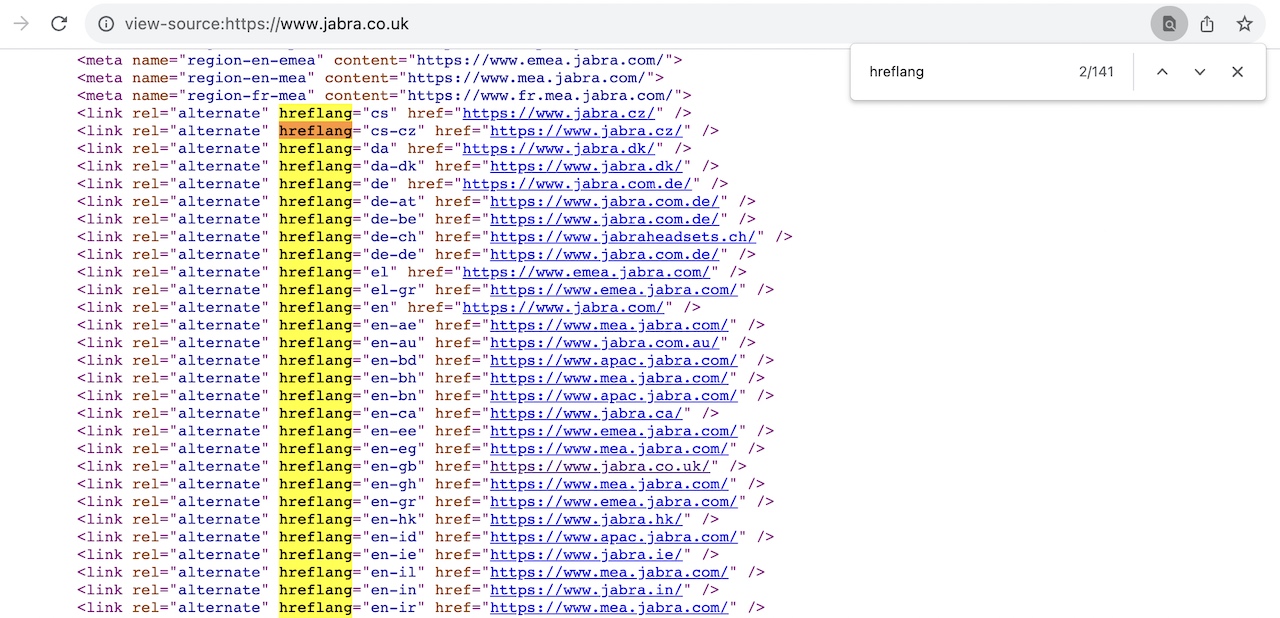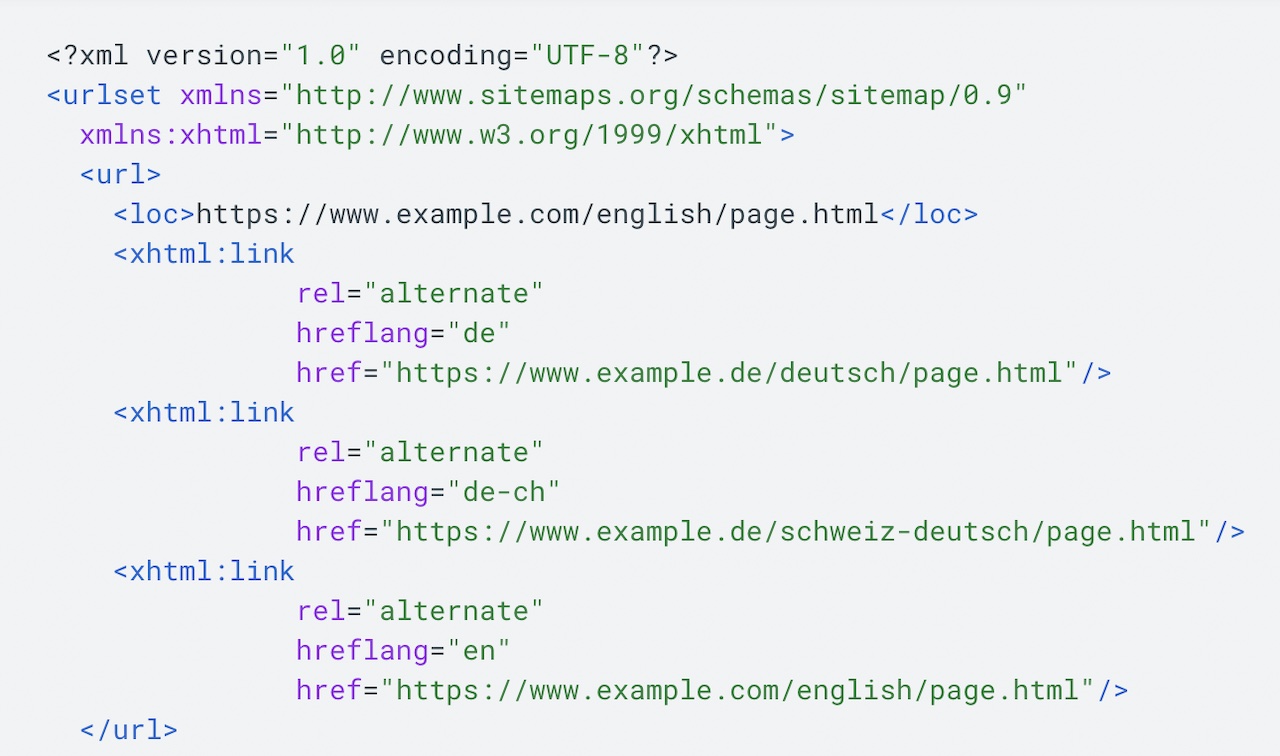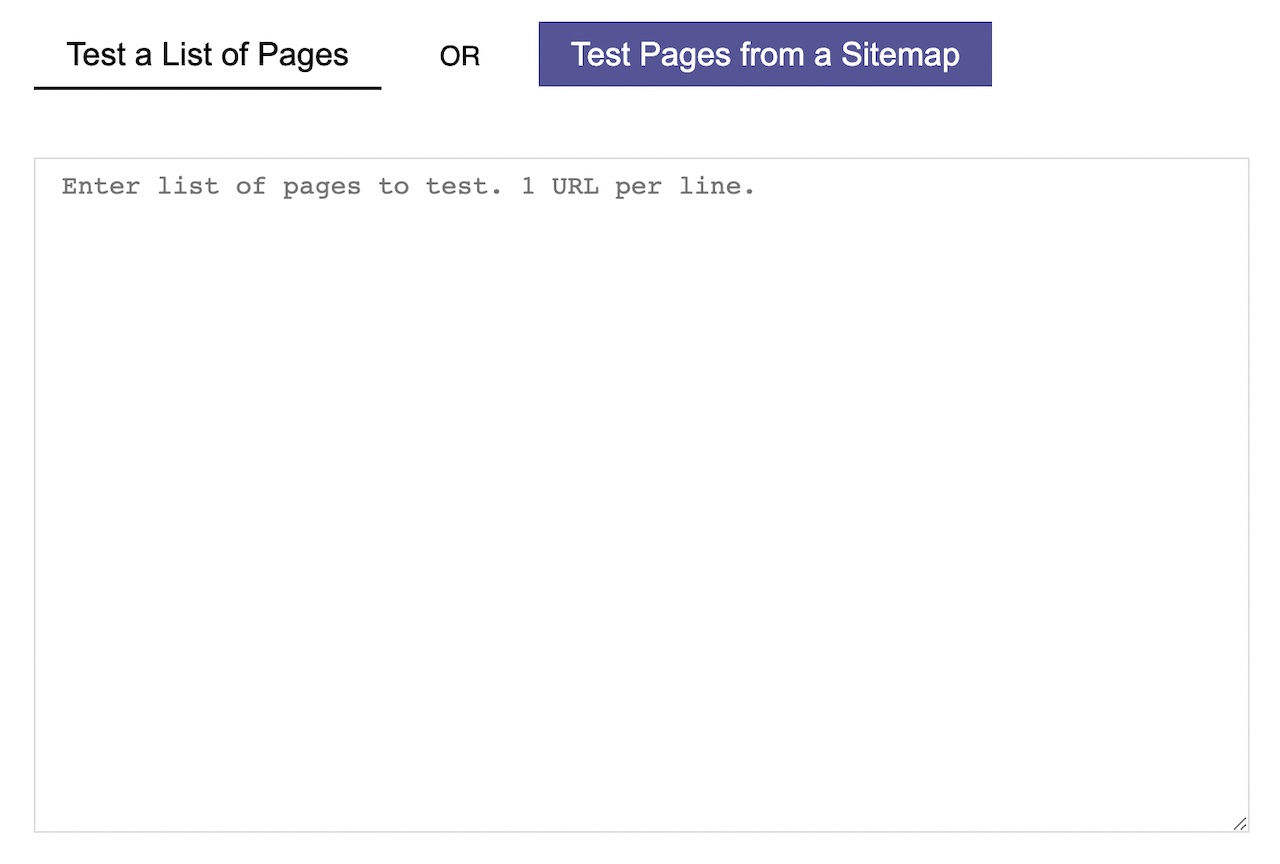The Beginner's Guide to Hreflang
When it comes to optimizing your website for multiple languages, ensuring that your content reaches the right audience is crucial. This is where hreflang tags step in, offering a solution to target specific regions and languages effectively. By implementing hreflang attributes correctly, you can avoid confusing search engines about which version of your content to display, ultimately improving your site's visibility and user experience. Understanding how hreflang works and its impact on your SEO strategy can make a significant difference in reaching diverse audiences and expanding your online presence.
For example, on Jabra's website we can see that they have different websites and pages for each language and/or language-country pair:

Understanding Hreflang
SEO Significance
When implementing hreflang, you significantly impact your website's SEO rankings by ensuring the right content appears to the appropriate audience. By using hreflang links, you can enhance website traffic through improved international search visibility.
Basic Concepts
To grasp the essence of hreflang, start by understanding its fundamental principles. This involves learning how to use hreflang tags for language targeting purposes. By implementing hreflang correctly, you can enhance user experience and boost engagement on your site.
Implementation Rules
Bidirectional Nature
When working with multiple language versions, it's crucial to implement bidirectional hreflang properly. This ensures that all language variations are appropriately connected for effective search engine indexing. Optimizing bidirectional hreflang is key to improving your site's overall performance.
Self-referential Importance
Utilize self-referential hreflang tags for specific language pages within your site. Implementing these tags correctly helps indicate different language variations present on a single page. Ensuring accurate implementation of self-referential hreflang tags is essential for each language version.
X-default Tags
Implement x-default tags to specify default language versions for users without specific preferences. Correctly using x-default tags enhances the overall user experience on your site.
For example, on BMW.com you can see the x-default hreflang is for the English version of their website:

Constructing Hreflang Tags
HTML Implementation
When constructing tags in HTML, implement hreflang for precise language targeting. Follow best practices to ensure correct HTML implementation, enhancing your website's visibility.
Utilize HTML implementation of hreflang tags to reach a wider audience and improve user experience. By optimizing these tags, you can enhance your website's performance significantly.
HTTP Headers
For efficient tag construction, use HTTP headers to implement hreflang effectively. This method provides better server-side control over language targeting. Ensure the proper configuration of HTTP headers for optimal results.
Implementing hreflang through HTTP headers is crucial for seamless language targeting on your website. By utilizing this method correctly, you can enhance user experience and boost your website's search engine visibility.
XML Sitemap
When constructing tags, include hreflang annotations in XML sitemaps to assist search engines in understanding your multilingual content better. Optimize XML sitemaps with hreflang annotations for improved indexing across different languages.
Ensure the accurate implementation of hreflang in XML sitemaps to prevent any indexing issues on your multilingual website. By incorporating these annotations correctly, you can enhance the overall SEO performance of your site.
Google Search Central gives a great example of how an XML sitemap can be structured to include hreflang URLs:

Targeting Locale
Language Selection
When implementing hreflang tags, choose the appropriate language codes to indicate the language of your content. Make sure to use standard codes like "en" for English.
Selecting the correct language and region codes is crucial for effective international targeting. For example, use "en-US" for English content targeted at the United States.
To ensure consistency, use the same language selection across all hreflang tags on your website. This consistency helps search engines understand and display the right version of your content to users.
Locality Consideration
For effective geographical targeting, consider regional targeting with hreflang to serve localized content to specific audiences. Tailor your content based on regions using codes like "fr-CA" for French content in Canada.
Optimize your hreflang tags for specific regions to enhance user relevance. By doing so, you can improve user experience by directing visitors to the most relevant version of your site.
Implementing hreflang with locality consideration is essential for reaching local audiences effectively. By incorporating region-specific codes, you can better target users in different locations.
Semi-automation Process
Language and Locality
When targeting multiple locales, combine language and locality tags to ensure precise audience reach. By implementing hreflang tags with both attributes, you can accurately localize your content. This optimization significantly improves search engine ranking by catering to specific language and regional preferences.
URL Insertion
To enhance the visibility of language-specific pages, insert hreflang tags directly into URLs. Including these annotations in URL structures aids in better indexing by search engines. Optimizing URL insertion of hreflang tags is crucial for providing users with a seamless and enhanced browsing experience.
Sitemap Download
Download XML sitemaps to validate the implementation of hreflang annotations across different language versions. Utilize sitemap downloads as a tool to verify correct hreflang settings and ensure consistency across all localized pages. Regularly reviewing sitemaps helps in maintaining accurate hreflang annotations.
Change Logging
For efficient tracking, log any changes made to hreflang tags. Keeping a record of modifications allows you to monitor variations in languages effectively. By tracking and documenting changes in hreflang tags, you create a valuable resource for future reference.
Auditing for Issues
Missing Annotations
When conducting a site audit for hreflang, you need to focus on identifying any missing annotations. Check each language version of your website thoroughly to ensure that all hreflang tags are in place. Rectify any instances where the hreflang annotations are absent in specific pages. This step is crucial to guarantee complete language coverage across your site.
Invalid Annotations
To prevent indexing issues and potential SEO penalties, it is essential to address any invalid hreflang annotations during your site audit. Look out for errors in the hreflang tags and make sure they are corrected promptly. Ensuring that all hreflang annotations are valid and properly formatted will help maintain the integrity of your website's multilingual content.
Reciprocal Missing
As part of your auditing process, be sure to resolve any reciprocal missing hreflang tags for bidirectional links. Double-check for any missing reciprocal hreflang annotations between different language versions of your site. Implementing reciprocal hreflang tags establishes bidirectional relationships between the language variations, enhancing user experience and search engine visibility.
Common Problems
Language Mismatch
When auditing your website for related issues, ensure to rectify any language mismatches in the hreflang tags. Cases of discrepancies in language codes within hreflang annotations can lead to confusion. Correct these to maintain everything consistent.
Identify where the language codes are not matching and correct them promptly. Consistency in language across all hreflang tags is crucial for effective targeting of different audiences.
Non-canonical Links
To avoid SEO penalties, address any non-canonical hreflang links on your site. These links can cause related issues by leading to duplicate content problems. Identify and fix non-canonical URLs within hreflang tags to ensure proper indexing.
Make sure that all hreflang links point to the canonical versions of your pages. This optimization strategy helps search engines understand the intended audience for each version of your content.
Broken Page Links
Fix any broken hreflang links found during your website audit. Broken links can impact user experience negatively and harm your site's credibility. Regularly monitor and update hreflang links to prevent cases of broken page issues.
Best Practices
Correcting Mistakes
When implementing hreflang, rectify mistakes promptly to boost your site's SEO performance. Addressing errors in hreflang tags is crucial to prevent negative impacts on your search rankings. Regularly review and correct any misconfigurations in hreflang settings for optimal results.
Using Tools
To ensure accurate implementation, utilize hreflang testing tools available in the market. Explore different tools that can help you validate hreflang tags and detect any errors efficiently. By leveraging these tools, you can optimize your hreflang usage for better management and performance.
A great free tool to use to test hreflangs is hreflang.org which is free to use:

Google's Ignored Issues
Understand the common reasons why Google may ignore hreflang tags on your website. Address any issues that could potentially lead to Google disregarding your hreflang annotations. It's essential to comply with Google's guidelines meticulously to prevent your hreflang tags from being ignored.
Final Thoughts
Importance
When it comes to international SEO, implementing hreflang tags correctly is crucial. By specifying the language and region of a webpage, you ensure that the right content reaches the right audience. This not only enhances user experience but also boosts your site's credibility.
Enhancing User Experience
Properly utilizing hreflang tags can result in a significant improvement in your website's search visibility. When users search for content in their preferred language or region, having hreflang implemented ensures that they land on the most relevant page. This personalized approach can lead to higher engagement and conversions.
Final Remarks
You've now grasped the ins and outs of hreflang tags, from their construction to common pitfalls. Remember, precision is key when targeting different locales. By semi-automating the process and conducting regular audits, you can enhance your website's international SEO performance.
Incorporate these best practices into your strategy to navigate through the complexities of hreflang implementation successfully. Your attention to detail and proactive approach will ensure that your website speaks the language of every visitor, driving traffic and engagement. Take charge of your SEO efforts and watch your global reach expand!
Frequently Asked Questions
What is hreflang and why is it important for SEO?
Hreflang is an HTML attribute that tells search engines about the language and geographical targeting of a webpage. It's crucial for international SEO as it helps search engines serve the correct version of your content to users in different regions, enhancing user experience and search rankings.
How can I construct hreflang tags correctly?
Constructing hreflang tags involves specifying the language and country code for each version of your content. Ensure consistency between the hreflang values in your tags, use absolute URLs, and include self-referencing canonical tags to avoid errors and help search engines understand your international targeting strategy effectively.
What are common problems encountered when implementing hreflang tags?
Common issues with hreflang implementation include incorrect language or country codes, missing or conflicting hreflang values across pages, improper implementation on mobile versions, and issues with self-referencing canonical tags. Regularly auditing your hreflang setup can help identify and rectify these problems to ensure optimal performance.
How can I semi-automate the process of managing hreflang annotations?
You can semi-automate hreflang tag management by utilizing tools like XML sitemaps generators, specialized plugins for popular CMS platforms, or custom scripts that dynamically generate hreflang annotations based on predefined rules. This approach streamlines the process, reduces manual errors, and ensures consistent implementation across your website.
What are some best practices to follow when working with hreflang attributes?
When working with hreflang attributes, it's essential to maintain a clean and organized structure by using clear language and country codes, verifying tag accuracy through testing tools like Google Search Console, monitoring indexing status regularly, avoiding unnecessary redirects or canonicalization conflicts, and updating annotations promptly when content changes occur.
Hike SEO
When it comes to optimizing your website for SEO, Hike is the perfect platform for beginners, small businesses, and agencies. Hike uses Artificial Intelligence (Chat-GPT4) to suggest keywords to research, highlights content topics to write about, and even writes a draft as a starting point (using the Content Wizard), which saves the user time and makes overall SEO efforts easier.
If you haven’t tried Hike yet, sign up today and see how easy it is to become empowered to take control of your SEO.